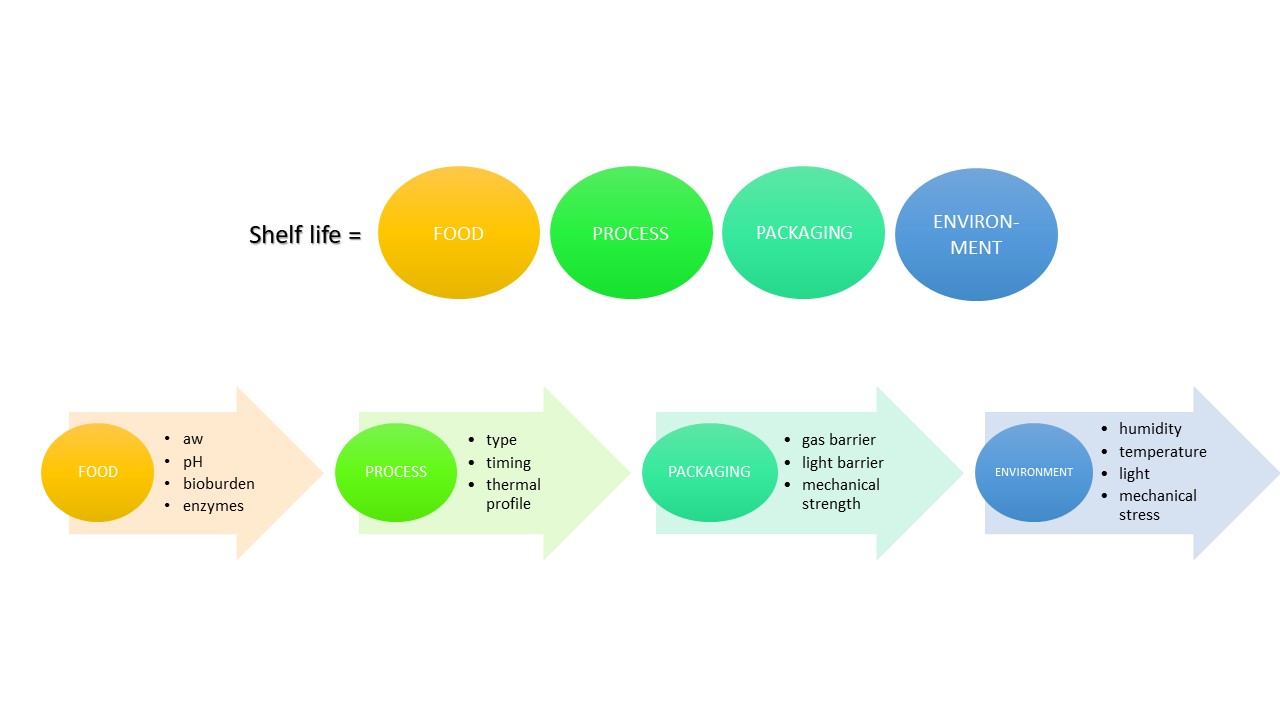How to Extend the Shelf Life of Food Products - Ask the Expert!
Extending the shelf life of a product is a crucial issue for many food manufacturers. But how is shelf life determined and how can it be prolonged?

Ilaria Trento, Food & Microbiology Scientist at FILL Good, will examine this topic by answering some key questions.
WHAT IS SHELF LIFE?
The shelf life of a food product is the length of time during which its safety, health, and organoleptic characteristics are preserved.
A distinction should be made between:
- Primary shelf life: the length of time following the production and packaging phase during which food retains an adequate quality level under specific storage conditions.
- Secondary shelf life, also known as pantry shelf life: the length of time following the opening of the original packaging during which food keeps nutritional, sensory, and hygienic properties at acceptable levels.
Acceptance is the result of a number of factors:
- Growth of undesired or dangerous microorganisms,
- Colour, smell or taste alteration;
- Oxidation with consequent loss of vitamins and nutrients;
- Development of new undesired sensory characteristics.
WHAT FACTORS AFFECT FOOD SHELF LIFE?
In the first place, shelf life depends on the product's inherent features such as its ingredients, chemical and physical characteristics, microbiological profile, and the presence of any preservatives.
As a consequence, raw materials are the first element to take into account as their quality affects that of the finished product. In no way can a packaging or storage system make up for any lacks or deficiencies deriving from the raw materials.
To determine a product shelf life, three more factors should be considered:
- Food processing or transformation;
- The type of packaging and packaging process;
- Environmental factors, such as temperature and storage conditions.
To summarise the above:

HOW TO EXTEND THE SHELF LIFE OF A FOOD PRODUCT?
Working on one or more of the four factors mentioned before can extend a product shelf life. For instance, we can:
- Modify the product ingredients and its inherent properties;
- Introduce changes to the manufacturing process;
- Choose another type of packaging;
- Change the environmental factors.
Of course, the food itself and the way it is processed are most important when it comes to achieving a finished product with a “profitable” shelf life; therefore, selecting premium raw materials and the most suitable technology should be a priority for any manufacturer wishing to optimise packaging solutions and environmental factors as well.
HOW TO DETERMINE THE SHELF LIFE OF A FOOD PRODUCT?
To assess the length of time a food product can be stored in the most accurate way, shelf life testing will be necessary.
The starting point to determine shelf life is finding an acceptance indicator, i.e. a key factor that, being monitored over time, will reveal when the food levels become unacceptable.
Acceptance indicators include a reduction in the vitamin content, changes in the aroma, oxidation, or the growth of specific microorganisms beyond a certain threshold that make the food unsafe.
Once the main indicators have been identified, they are monitored throughout the expected shelf life period so as to determine when they exceed the acceptance limits and the product life comes to an end.
WHO CAN EXTEND SHELF LIFE?
Extending the shelf life of a product is the result of good teamwork!
By working together, the manufacturer, the company supplying the filling solutions and the testing laboratory will identify the most adequate shelf life tests as well as the best options in terms of product processing, filling and packaging.
Would you like to extend the shelf life of your products? Contact one of our experts to receive more information and discover the solutions that best suit your needs.

